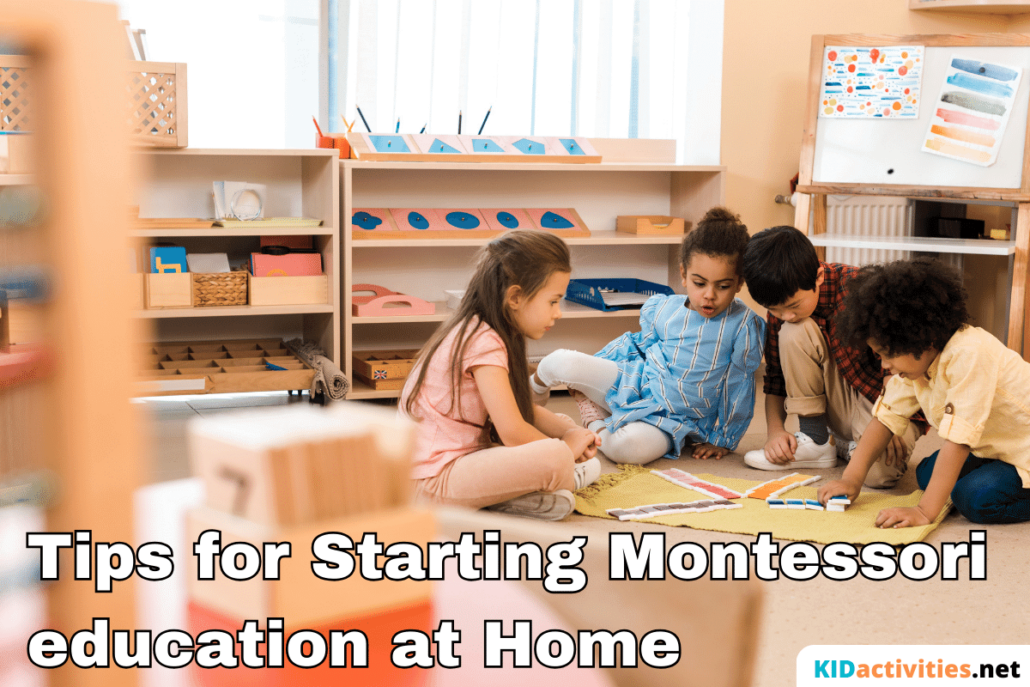For over a century, Montessori education has been praised worldwide for its ingenuity, success, and positive benefits in both public and private institutions. The foundations of Montessori have remain unchanged: mixed age classrooms and no grades or homework.
Additionally, Montessori students learn practical, daily life skills, have lots of hands-on activities, and explore life through the lens of science and social studies.
Montessori has been a buzz word among education and family circles alike, but did you know that you can bring Montessori into your very own home?
Montessori is a benefit in nearly every way, from how you speak to your child, to the routines in your home, to the way that children are encouraged to actively and independently engage in their “work” (play).
It is never too early or too late to start implementing Montessori in your home. Montessori can be a benefit to all children, no matter the age or stage they’re in. Learning about Montessori can help you change the way you speak to your child, offer a variety of hands-on learning activities, and set up child-friendly areas in your home.
Since having my son, I have begun the process of learning and implementing Montessori strategies, especially now that he has turned one year old. It takes commitment, follow-through, and lots of intentionality to make it work, but I know it is worth it in the long run.
Here are five tips that I’ve found helpful as I’ve implemented Montessori in our home for our son.
Montessori Made Easy
1. Make it work with what you have.
Adopting the Montessori style does not mean that you need to make big purchases and spend a lot of money to buy the “latest and greatest” Montessori equipment. With a few tweaks and repurposing, things in your very own home will work just fine.
We did this very thing in my own home. I wanted an open-shelf piece to store my son’s toys. I was looking at several options, but they were all over the budget I wanted to spend. Instead, I was able to take the doors off a TV cabinet that we no longer needed, sand down the spots where the screws were, and arrange my son’s toys in the compartments. I didn’t have to spend money, and I used what I already had. That is a major win in my book!
Before you spend a lot of money on making your home Montessori-friendly, I encourage you to take a good look at what you already have or can repurpose. You might be surprised by what you find!
2. Develop a plan that will work for your family.
Start by taking a tour of your house and writing down notes of what you like. What is working for your family? What do you want to change, add, or expand? Ask yourself some questions such as: How can my child dress themselves? Are their clothes easily reachable? How can I create an opportunity for them to brush their teeth and wash their face?
Do they have a bathroom station where they can brush their teeth? How can my children play well? What systems are in place for clean up after playtime?
It is tempting to want to change everything all at once, but I have found that it is better to start with a few basic changes so that it is not overwhelming for the parent or the child. Introduce those changes to your children and model what needs to be done. Make a list of what you want to introduce and give yourself reasonable deadlines to implement new changes.
3. Cultivate independence.
Part of the Montessori manifesto is that if a child can do something on their own, they should be allowed to try. There are many little life lessons that children can learn from the success or nonsuccess of their attempts.
It can be very tempting to want to do things for your child, but the true act of helping them is teaching them how to do the job themselves. It is our job as parents to give them the opportunity, mindset, and skills to try and try again.
Helping your child establish independence can start with creating spaces and rhythms in your home that help routines work.
One of the most important aspects of Montessori is inviting your child to help with the daily chores that parents do around the house. Children love to help! They want to do everything that grown-ups do. I believe this is the best time to teach them the value and importance of helping.
As parents, we may be hesitant to give them the opportunity to try because it can feel like more work when we do let children help. There is more mess, more that we might need to “do over,” more time that we need to dedicate to teaching them… but these small acts of guiding them in the process of helping can make a difference not only in their independence and confidence, but also in their role in the family.
4. Do your own reading.
There are several great books that provide a lot of valuable insight and details about the way of Montessori. All of these have been helpful to me as I’ve started my own journey of learning and loving Montessori.
- The Montessori Baby by Simone Davies and Junnifa Uzodike – This book provides you with a practical approach for caring for your baby in the first year of life through the lens of Montessori. In this book, parents are equipped to prepare the environment, use the child-led principles of the Montessori education system, encourage a secure sense of attachment, and set clear boundaries.
- The Montessori Toddler by Simone Davies – As the front cover states, this book is “a parent’s guide to raising curious and responsible human beings.” Building on The Montessori Baby, this book provides hundreds of practical ideas for life with a toddler. You will learn how to turn a regular home into a Montessori home and become a more attentive parent.
5. Just start.
Even though you may not have everything 100% ready, sometimes the best thing to do is just jump in and get started! The helpful thing is that Montessori can be implemented starting at any age, and it doesn’t have to be “all or nothing.”
Like parenting, bringing Montessori into your home is a process that is constantly changing, growing, and improving. It helps children by creating a routine of independence and an environment of order and learning, but it also helps parents to be able to be attentive, easy-going, and relaxed.
Final Thoughts
In my opinion as both an educator and a parent, the benefits of Montessori are innumerable, and we’re seeing the positive effects on this type of learning play out in children’s lives across the globe.
Even if you cannot join a Montessori school or playschool, by following these five tips mentioned above, you can experience the benefits on Montessori right in your own home. Your future self will thank you!

